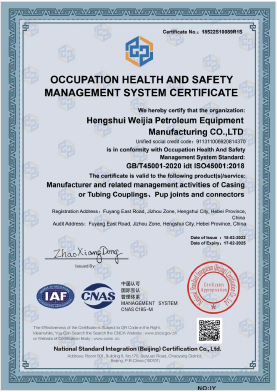- Afrikaans
- Albanian
- Amharic
- Arabic
- Armenian
- Azerbaijani
- Basque
- Belarusian
- Bengali
- Bosnian
- Bulgarian
- Catalan
- Cebuano
- Corsican
- Croatian
- Czech
- Danish
- Dutch
- English
- Esperanto
- Estonian
- Finnish
- French
- Frisian
- Galician
- Georgian
- German
- Greek
- Gujarati
- Haitian Creole
- hausa
- hawaiian
- Hebrew
- Hindi
- Miao
- Hungarian
- Icelandic
- igbo
- Indonesian
- irish
- Italian
- Japanese
- Javanese
- Kannada
- kazakh
- Khmer
- Rwandese
- Korean
- Kurdish
- Kyrgyz
- Lao
- Latin
- Latvian
- Lithuanian
- Luxembourgish
- Macedonian
- Malgashi
- Malay
- Malayalam
- Maltese
- Maori
- Marathi
- Mongolian
- Myanmar
- Nepali
- Norwegian
- Norwegian
- Occitan
- Pashto
- Persian
- Polish
- Portuguese
- Punjabi
- Romanian
- Russian
- Samoan
- Scottish Gaelic
- Serbian
- Sesotho
- Shona
- Sindhi
- Sinhala
- Slovak
- Slovenian
- Somali
- Spanish
- Sundanese
- Swahili
- Swedish
- Tagalog
- Tajik
- Tamil
- Tatar
- Telugu
- Thai
- Turkish
- Turkmen
- Ukrainian
- Urdu
- Uighur
- Uzbek
- Vietnamese
- Welsh
- Bantu
- Yiddish
- Yoruba
- Zulu
casing threads and couplings
Understanding Casing Threads and Couplings in Oil and Gas Industry
The oil and gas industry is built on a foundation of complex engineering, where the design and material selection are critical to the success and safety of operations. Among the essential components in drilling and production operations are casing threads and couplings. These items play a crucial role in ensuring the integrity of the wellbore and the overall efficiency of drilling activities. This article will explore the significance of casing threads and couplings, their types, and their applications in the field.
The Importance of Casing Threads
Casing is a series of steel pipes that are used to line the borehole once drilling is completed. The primary purpose of casing is to provide stability and prevent collapse of the wellbore. Additionally, it protects freshwater aquifers and other geological formations from contamination that can occur during drilling and production operations. A critical component of casing is the thread design that connects one section of pipe to another.
Casing threads are critical for ensuring a tight seal between joints in the casing, preventing leaks that can lead to environmental hazards or operational failures. The design of these threads is integral to the mechanical properties of the pipe. Common thread designs include API (American Petroleum Institute) threads, which are standardized and widely used in the industry. The API threads are typically designed to provide sufficient strength and sealing capability under various pressure and temperature conditions encountered in underground reservoirs.
Couplings The Connecting Link
Couplings serve as intermediate connectors that join two lengths of casing pipes. They are typically short pieces of pipe with threads on both ends, allowing for easy assembly and disassembly of casing strings. The choice of coupling can significantly affect the strength and durability of the wellbore system.
Just like casing threads, couplings are available in various types, designed to accommodate different casing materials and sizes. Typical options include threaded couplings and welded couplings. While threaded couplings allow for easy installation and removal, welded couplings offer a more permanent solution that can enhance the overall structural integrity of the casing string.
Types of Casing Threads
The variety of casing thread types is designed to meet specific performance requirements. Here are some commonly used types
casing threads and couplings

1. API Threads As mentioned earlier, API threads are standardized and widely used, making them compatible across various manufacturers. They are designed for robustness and easy assembly.
2. Premium Threads These threads provide enhanced performance characteristics compared to API threads. Premium threads are typically used in high-pressure and high-temperature applications, offering better sealing capabilities and reduced risk of thread wear.
3. Stabbing Threads These are often used in special applications requiring precise alignment and minimal torque during installation. Stabbing threads allow for easier engagement when connecting pipes.
4. Wavy Threads Unique in their design, wavy threads offer specific advantages in preventing the pipe from loosening under cyclic loading, making them suitable for environments with fluctuating pressure conditions.
Applications in the Field
Casing threads and couplings are employed in various drilling applications, including oil, gas, and geothermal wells. Their application extends to horizontal drilling, where rigging and assembly can become complicated due to the angle and direction of the borehole. The proper selection and use of casing threads and couplings are crucial in minimizing risks associated with drilling operations.
Moreover, these components are also important for maintenance and repair work. When a well needs to be serviced, operators rely on the efficiency of the casing and coupling systems to access the wellbore without significant downtime.
Conclusion
Casing threads and couplings play a vital role in maintaining the integrity and functionality of oil and gas wells. Understanding the intricacies of these components is essential for engineers and field operators alike, as their selection can significantly influence the success of drilling operations. As the industry continues to evolve with new technologies and methods, the importance of well-designed casing systems remains paramount in safeguarding both the environment and operational success. With ongoing advancements in materials and designs, the future of casing threads and couplings will undoubtedly bring further enhancements to the safety and efficiency of the oil and gas industry.
-
Well Casing Extension Couplings – Applications and InstallationNewsJun.06,2025
-
Types of Crossover Subs in Drilling & CompletionNewsJun.06,2025
-
Key Features of High-Quality Tubing Pup JointsNewsJun.06,2025
-
Installation and Maintenance Tips for Steel Couplings for PipeNewsJun.06,2025
-
How to Select the Right Pup Joint for Oil & Gas OperationsNewsJun.06,2025
-
Applications of Stainless Steel Pipe CouplingsNewsJun.06,2025







